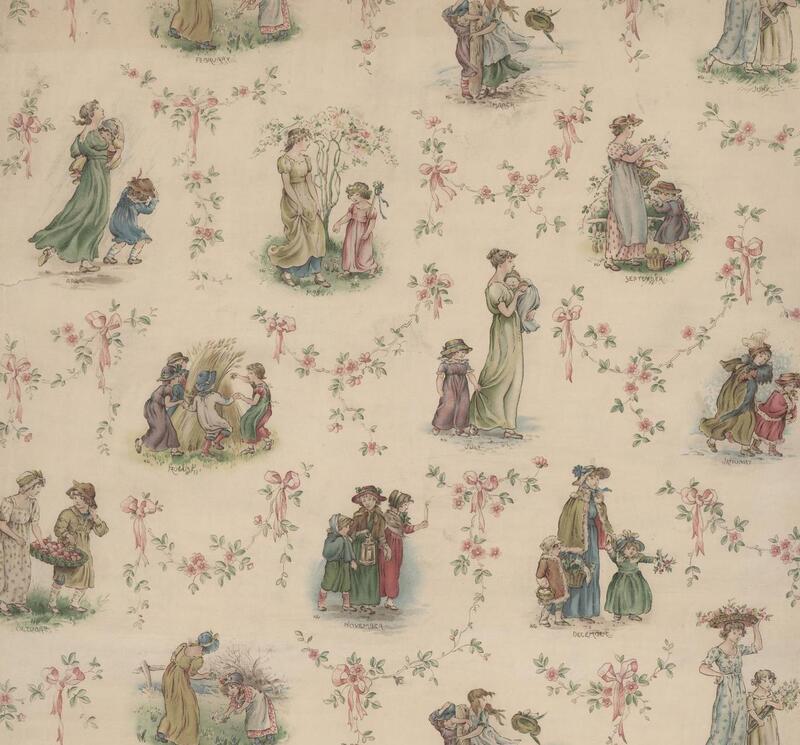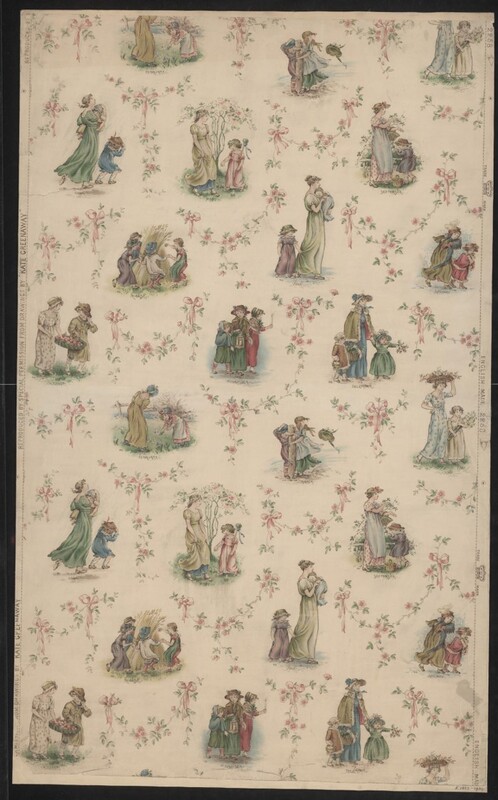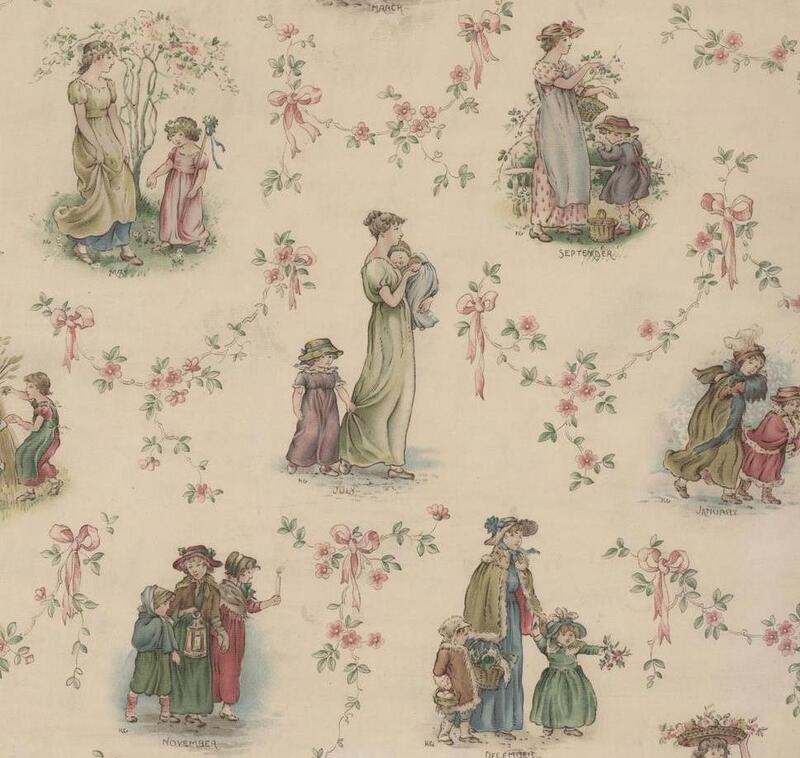Kate Greenaway's Design for Nursery Wallpaper
Item
-
Title
-
Kate Greenaway's Design for Nursery Wallpaper
-
Description
-
This sample of nursery wallpaper features illustrations by the artist Kate Greenaway of children engaged in various seasonal activities. Some of the children pick apples and berries, while others walk in rain or snow. The children are dressed in the style of the Regency period, and, even while at play, their expressions remain stoic. The illustrations are set against a cream-coloured backdrop adorned with pink flowers and bows. Though perhaps faded by time, the pastel colours likely always appeared subdued. The name of the month in which the scene takes place appears under each illustration along with the artist’s initials, “KG,” in smaller print. The text around the border of the wallpaper repeats three phrases: “Reproduced by Special Permission from Drawings by Kate Greenaway,” “English Made 2258,” and, surrounding an image of a crown, “Trade Mark.” The wallpaper sample is currently housed in the Victoria and Albert Museum.
-
HANNAH FIELD ON WHAT THIS OBJECT TEACHES US:
As Dr. Field explains, this mass-produced, late-Victorian nursery wallpaper calls attention to the Victorian trend of giving children their own separate spaces and objects. While toys offered children the opportunity to create a narrative through play, wallpaper instead suggests a “passive child imposed on by adult decisions.” Indeed, as Dr. Field points out, modernist poet Mina Loy had a Greenaway wallpaper as a child and her biographer criticized its stultifying effect on the young Loy’s mind.
To look beyond this reading, Dr. Field suggests we shift our attention from nursery wallpaper to nursery walls—particularly given the contemporary children’s practice of pasting up pictures on walls in the form of collages. Some design manuals, such as Robert W. Edis’s Decoration and Furniture of Townhouses (1881), encouraged children to cut out images from publications for this very purpose, turning a destructive act into a creative act. Dr. Field points out that Edis recommended Kate Greenaway’s illustrations, among others, for this activity. Children’s arrangement of images into collage form thus changed the script of the images themselves, allowing children a good measure of agency in the face of the wallpaper’s potentially “stultifying” effect.
While there is no specific evidence of Kate Greenaway’s illustrations being put to this use, the very nature of the illustrations—featuring small groups of figures without elaborate settings—seems suited to the purpose. Because we have little concrete evidence of children’s actual practices, Dr. Field explains, our analyses of how Victorian children used material objects remain necessarily (but often productively) speculative.





